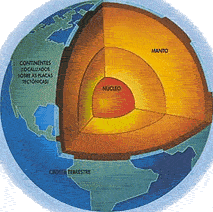 The word steppe is used to designate a specific type of biome that could be described as desert due to its sparse and low vegetation, its extreme and harsh climate and its low amount of rainfall. However, the steppe is not a desert properly speaking because it has lower temperatures and because it has another type of soil, as well as other flora and fauna (while in the desert these two almost do not exist).
The word steppe is used to designate a specific type of biome that could be described as desert due to its sparse and low vegetation, its extreme and harsh climate and its low amount of rainfall. However, the steppe is not a desert properly speaking because it has lower temperatures and because it has another type of soil, as well as other flora and fauna (while in the desert these two almost do not exist).
The steppe is a type of biome characteristic of areas of the planet such as western North America, Patagonia in South America, some regions of North Africa, central Asia and southern Australia, among others. In all these regions we find extensive territories with semi-arid and continental climates (the latter meaning that there is less humidity because it is not in direct contact with the oceans and seas). Temperatures can be very high in summer and very low in winter, to which is added the thermal amplitude that is experienced between day and night, a characteristic element of arid and semi-arid climates. Here it is important to note that the steppe can be basically divided into the cold steppe (characteristic for example of some areas of Russia) and the subtropical steppe (such as the Australian steppe).
As with all biomes, the steppe has specific flora and fauna that are characteristic of these regions and that are hardly found in the same conditions in other biomes. Thus, one of the elements of the vegetation that stands out in the steppe is its scarcity, its low height and its composition almost mostly herbaceous or made from shrubs. This means that the images of the steppe always show wide flat territories in which trees or extremely abundant vegetation are not seen.
With regard to fauna, typical animals of this biome are rodent animals such as hamsters, marmots, hares and others such as eagles, bison, kangaroos, antelopes and some types of wild horses.









